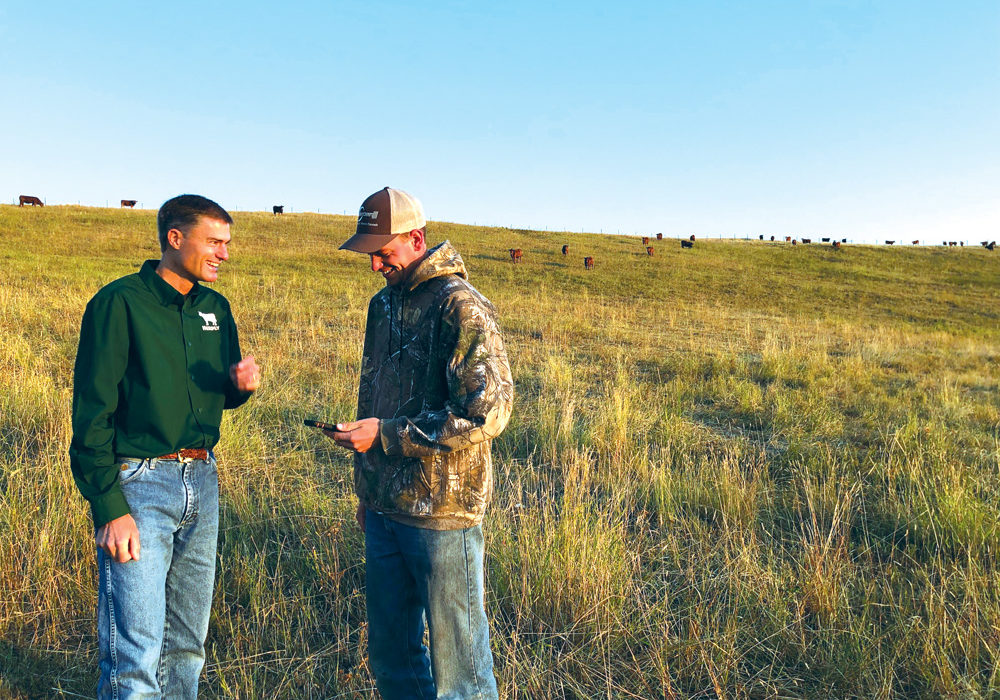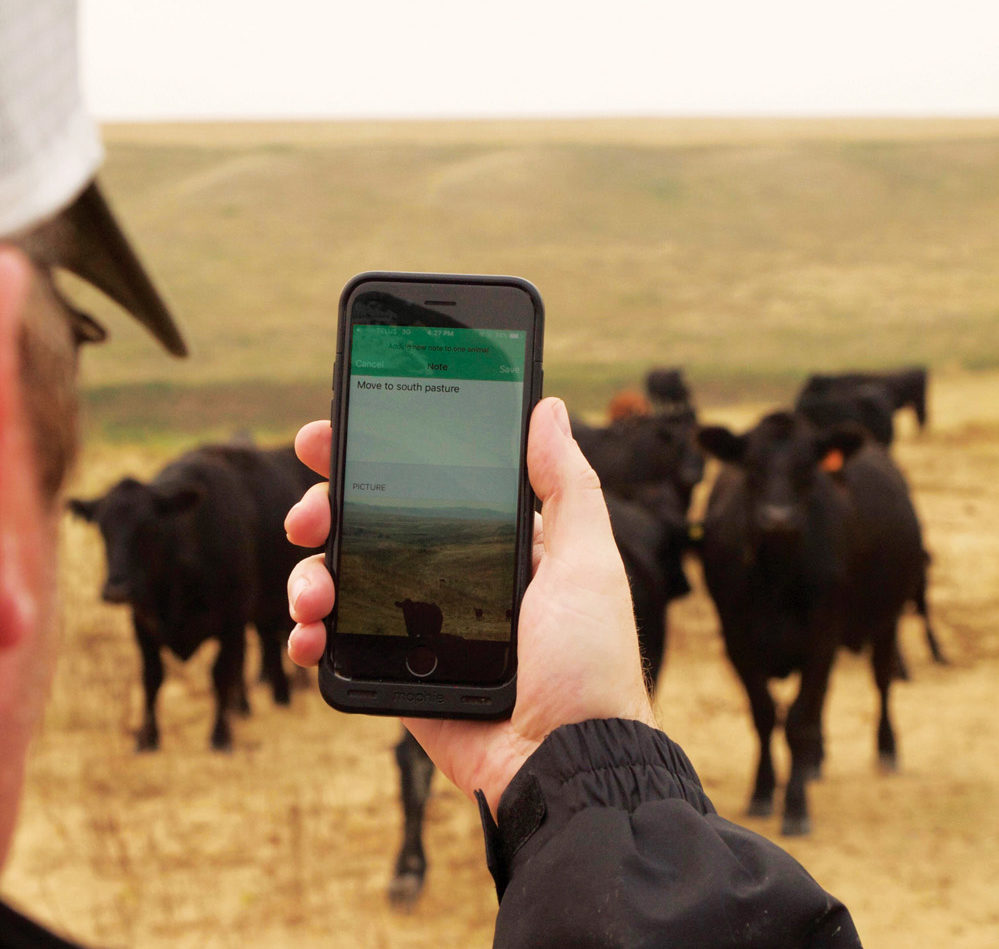Canadian farmers are big users of smartphones, more than the general population, according to a 2015 Ipsos Canada study. That should be no surprise. Aside from the regular uses for an array of ag-related apps, smartphones also provide a lifeline for many rural residents facing emergency situations.
But what of those who have no cellular service or only a weak signal across large swaths of their farms and ranches?
For Al and Bev Madley their answer for the past several years has been SPOT GPS Satellite Messenger that runs on the Globalstar satellite network. At the push of a button, the device sends a preprogrammed “I’m ok” message to their designated contacts for regular safety checks. Having this SOS button offers them some peace of mind by knowing that first responders could find them in an emergency.

The Madleys run their ranching and guiding businesses out of their home at Canyon Ranch near Alexis Creek, B.C. It’s a remote location with no access to cellular service. They have to drive a good hour and a half to the nearest town, Williams Lake, to be within range of a cellular network in this remote region of the B.C. interior.
The Madleys know their land well — the family has been stewarding this rugged range since the late 1800s — but, as Al says, anything can happen when you’re riding horseback, particularly after dark. Al or Bev and both of their two adult children, Garrett and Brooke, regularly ride out on the range alone to check on the cattle.
Read Also

Body condition, nutrition and vaccination for brood cows
One of the remarkable events of the past century related to ranching has been the genetic evolution of brood cows….
“We have tried satellite phones in the past but coverage was hit and miss,” says Al. “SPOT works without a hitch. In cloudy weather, cold weather, any time of year, from mountains, valleys, out on the ocean, a helicopter, the messages have always gone through. It’s foolproof.”
SPOT is a one-way messaging device with a built-in GPS chip and satellite modem. Contacts receive the OK message along with GPS co-ordinates by text and/or email. They can’t reply to the message, but at least they know the whereabouts of the person and that they are safe and sound.
Each OK-message includes a link to Google Maps so they can view the location. The GPS is accurate to within a couple of metres.
They also like the fact that each OK message is stored on their computer at home for future reference. This allows Al to record precise locations for spots to be avoided on Google Map, or places where extra caution is needed such as where a predator has made a kill.
“So SPOT marks where we are when we send an OK message and I hit OK every hour or two to check in. We discuss our daily plan in the morning and might discuss codes, like sending three OK messages, five minutes apart from the same location, to mean ‘I’m broke down, or stuck’ so I need assistance, but not medical,” he explains. “It is a useful device. We don’t have a texting model, or the newest one by any means, but have made it work for us.”
The SPOT messenger currently available is the SPOT Gen3, which has a built-in “assist/help” button. Pressing it sends the user’s pre-set custom message by text and email to contacts every five minutes for an hour or until cancelled.
The Gen3 model now features motion-activated tracking. When the tracking button is pressed, GPS co-ordinates are sent to the linked web-based SPOT account when the person is moving, and stop sending to conserve battery power when the person stops moving. The service plan for the tracking function allows users to select reporting intervals of 2.5, 5, 10, 30 or 60 minutes. Contacts with access to the user’s account or the URL to a shared page are able to monitor the person’s footsteps on the SPOT live map as they go. There is also a SPOT app for track viewing.
The Madleys are very thankful to not be among the 5,000-and-counting people worldwide, including more than 1,500 Canadians, who have had to use the SOS button.
This button is strictly for emergencies because the SOS with GPS co-ordinates goes directly to the GEOS International Emergency Response Coordination Center near Houston, Texas. The team at the emergency centre uses the GPS co-ordinates to find and dispatch the nearest emergency services to the site of the incident.
The connection with emergency headquarters is embedded in all SPOT messengers. Users program their contacts for safety check-ins and their custom message for assistance into their own web-based SPOT accounts ahead of time using any device connected to the internet. The contacts and message can be changed in the account as needed.
Along with their own email address, the Madleys have designated three contacts off the ranch with internet and/or cellular service who are familiar with their operation and trail networks. At least one of the outside contacts is almost always aware of their daily plan and watching for SPOT messages in case nobody from their own family is in the house to monitor the computer for messages.
Al’s final and potentially life-saving tip is to carry the SPOT messenger on your person in an armband, belt clip, pocket or backpack because you may not be able to get to it in an emergency if it has been left behind in your saddle bag, truck or ATV.
Reliability
There are approximately 65,000 SPOT messengers in use in Canada.
Fintan Robb, senior marketing director with Globalstar Canada Satellite Co. at Mississauga, Ont., says the device is popular among outdoor recreation enthusiasts whose activities take them into areas with no cellular service or where the signals are too weak to be reliable. For this same reason, SPOT is also helping businesses meet provincial regulatory requirements and/or company policies for worker safety in remote locations.
Remote, in this case, is more a matter of distance from a cell tower than working in faraway locations that people typically associate with industries such as forestry and energy. In agriculture, remote could be working in the corrals or bin yard on your home place if cell service can’t be trusted, or out of range altogether in distant pastures and fields.
Speaking to the SPOT messenger’s reliability, Robb explains that it’s the combination of SPOT technology and Globalstar’s upgraded satellite network that ensures dependability.
Globalstar launched 24 low-earth-orbiting satellites from 2010 through 2013 to complement the existing satellites launched in 2007. The satellites are placed to pick up signals from more than 80 per cent of the earth’s land and water surface, orbiting at an altitude of 878 miles above the ground, whereas older technology orbits much higher.
System maintenance and repairs can be handled quickly because the software is now located on the ground at the gateways. These are where satellite dishes receive the messages with the GPS co-ordinates from the satellites and seamlessly switch them to the local communications network.
Every SPOT message and call from a Globalstar satellite phone is picked up by several satellites to reduce the chance of dropped messages. Additionally, SPOT messengers have what Robb calls “built-in redundancy,” meaning that the device sends messages multiple times. SOS messages are automatically sent every five minutes to the emergency response centre or until cancelled by the user.
SPOT Gen3 retails for around $170 with the Globalstar service plan for each costing US$200 annually as of this summer. Multiple units can be managed under one SPOT account to monitor check-in messages and tracking on a single map, he adds.
Satellite phones are an option for people who need to carry on two-way conversations, texting and emailing to conduct business from locations without cellular and internet connections. The phones, airtime and data plans cost more than a SPOT Gen3 with a service plan and don’t offer the one-touch check-in, SOS and tracking features.
Globalstar’s Sat-Fi modem is a relatively new offering for people in areas without internet service. It creates a satellite hot spot to connect tablets and computers to the internet as well as smartphones for calling, texting, and compressed browsing.
Visit ca.globalstar.com and www.findmespot.ca for more information and to find the closest dealers.

















